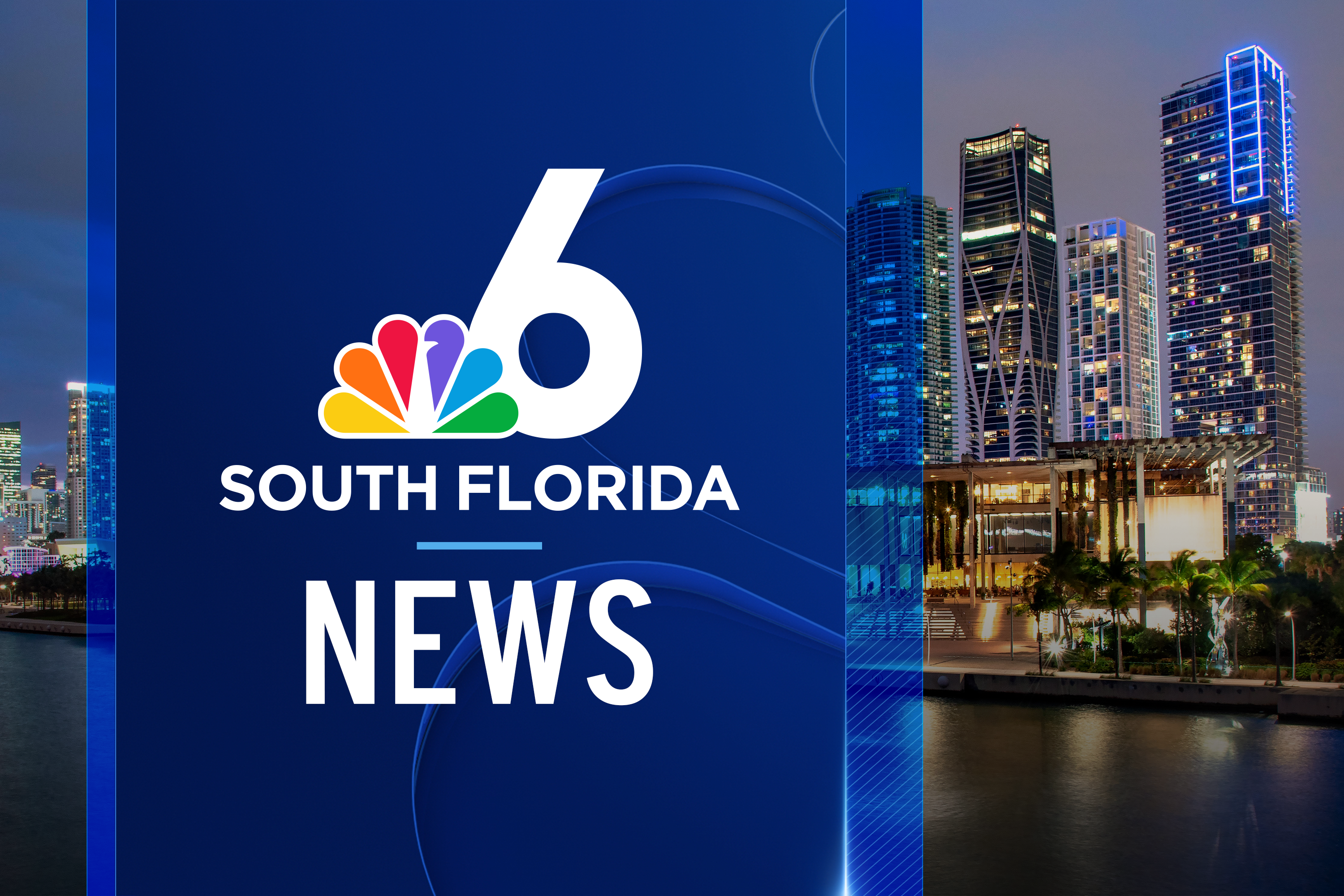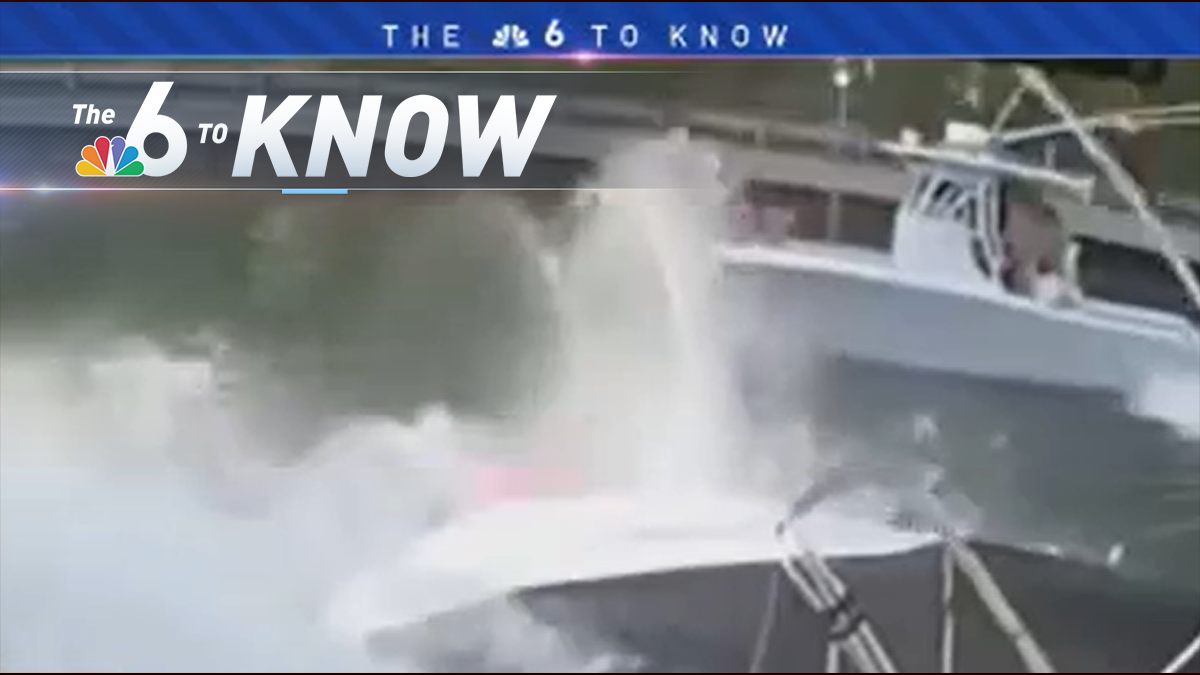NBC 6’s Angie Lassman has the latest information as the storm is downgraded from a hurricane after striking the Sunshine State.
This story is updated when the National Hurricane Center releases a new advisory.
Hurricane Irma gave Florida a coast-to-coast pummeling with winds up to 130 mph Sunday, swamping homes and boats, knocking out power to more than 3.3 million homes and businesses and toppling massive construction cranes over the Miami skyline. While it arrived in Florida as a Category 4 hurricane, by Monday morning it was down to a Category 1 with winds of 75 mph (120 kph).
The 415-mile-wide storm blew ashore in the morning in the mostly cleared-out Florida Keys, then began a slow march up the state's west coast, its punishing winds extending clear across to Miami and West Palm Beach on the Atlantic side.
As of 5 a.m. Monday, the system had weakened to barely a Category 1 storm with maximum sustained winds of 75 mph. The storm was centered about 60 miles northeast of Tampa and moving north-northwest near 18 mph.

Irma left nearly 1 million customers in Miami-Dade without electricity as utilities around the state dealt with downed power lines, flooding and poor visibility. More than 5.5 million people were without power around the state. Report outages or check on their status by calling 1-800-4OUTAGE (800-468-8243) or visit Florida Power & Light Company’s storm information page here.
Miami-Dade County issued a curfew starting at 7 p.m. Sunday through 7 a.m. Monday. Officials urged people to stay in their homes and shelters, even if it looks like Hurricane Irma has passed in some areas because moving around could be deadly.

The county curfew was extended until further notice. The curfew was issued in order for county personnel to begin assessing the damage and clearing roads.
Miami-Dade County spokesman Mike Hernandez said he's seen reports of people leaving the county's hurricane shelters.

"Just because it seems like the weather is clearing up, that doesn't mean it's safe to get out on the roads," he said.
President Donald Trump approved a declaration of a major disaster in Florida Sunday afternoon. Federal aid will become available to affected individuals in Charlotte, Collier, Hillsborough, Lee, Manatee, Miami-Dade, Monroe, Pinellas and Sarasota County. Many streets were flooded in downtown Miami and other cities.
Trump said Irma will cost "a lot of money" but he isn't thinking about that yet. "Right now, we're worried about lives, not cost," he said.

In addition to the 24 people killed during Irma's destructive trek across the Caribbean, at least two people were killed in a storm-related car crash in Hardee County Sunday morning.
Julie Bridges, a Hardee County sheriff's deputy, drove into the storm to pick up supplies for a shelter where she was working. She collided with another car, and both Bridges and the other driver were killed.

Florida Power & Light spokesman Rob Gould said Sunday it could take up to a week to restore power in Miami-Dade and Broward counties.
“We’ll be getting out in earnest tomorrow," Gould told NBC 6. "We’ve got to let the tropical winds die down in order to get our bucket trucks out to be able to do work. But as the weather subsides, we’ll be out there 24 hours a day until we get all the lights back on. But tomorrow we’ll have to do an assessment. We have to understand what’s happening.”

Gould said about 500,000 people in the network were already back up thanks to a $3 billion grid upgrade that's been underway for the better part of a decade.
In the low-lying Keys, where a storm surge of over 10 feet was recorded, appliances and furniture were seen floating away, and Monroe County spokeswoman Cammy Clark said the ocean waters were filled with navigation hazards, including sunken boats and loose vessels. But the full extent of Irma's wrath there was not clear.

The county administrator in the Florida Keys said crews will begin house-to-house searches Monday morning, looking for people who need help and assessing damage from Irma.
Monroe County Administrator Roman Gastesi said relief will arrive on a C-130 military plane Monday morning at the Key West International Airport. Once it's light out, they'll check on survivors. They suspect they may find fatalities.

Gastesi says they are "prepared for the worst."
While Irma raked the state's Gulf Coast, forecasters warned that the entire state — including the Miami metropolitan area of 6 million people — was in danger because of the sheer size of the storm.
A Miami woman who went into labor was guided through delivery by phone when authorities couldn't reach her in high winds and street flooding. Firefighters later took her to the hospital.
An apparent tornado spun off by Irma destroyed six mobile homes in Palm Bay, midway up the Atlantic coast. Flooding was reported along Interstate 4, which cuts across Florida's midsection.
In downtown Miami, two of the two dozen construction cranes looming over the skyline collapsed in the wind. No injuries were reported. City officials said it would have taken about two weeks to move the massive equipment. In Fort Lauderdale, a third crane collapsed around 5 p.m. Sunday.

Fort Lauderdale police arrested nine people they said were caught on TV cameras looting sneakers and other items from a sporting goods store and a pawn shop during the hurricane.
Nearly 7 million people in the Southeast United States were warned to evacuate, including 6.4 million in Florida alone.

About 30,000 people heeded orders to leave the Keys as the storm closed in, but an untold number refused, in part because to many storm-hardened residents, staying behind in the face of danger is a point of pride.
John Huston, who stayed in his Key Largo home, watched his yard flood even before the arrival of high tide.

"Small boats floating down the street next to furniture and refrigerators. Very noisy," he said by text message. "Shingles are coming off."
Irma made landfall just after 9 a.m. at Cudjoe Key, about 20 miles outside Key West. During the afternoon, it rounded Florida's southwestern corner and hugged the coast closely as it pushed toward Naples, Sanibel, Fort Myers and, beyond that, Sarasota, at 14 mph (23 kph).
Forecasters had warned some spots could see a storm surge of up to 15 feet of water.
Gretchen Blee, who moved with her husband to Naples from Long Island, New York, after Superstorm Sandy in 2012 heavily damaged their beach home, took cover in a hotel room as Irma raged.
Coastal Circulation and Storm Surge Model + SWAN Wave Model: The Coastal Emergency Risks Assessment (CERA) group delivers storm surge and wave predictions for impending or active tropical cyclones in the United States. Updated Sept. 10 at 2 p.m.
"I said let's go and live the good life in paradise," she said. "And here we are."
Some 400 miles north of the Keys, people in the Tampa-St. Petersburg area started bracing for the onslaught. The Tampa Bay area, with a population of about 3 million, has not taken a direct hit from a major hurricane since 1921.
"I've been here with other storms, other hurricanes. But this one scares me," Sally Carlson said as she snapped photos of the waves crashing against boats in St. Petersburg. "Let's just say a prayer we hope we make it through."
Hurricane Irma Potential Path
Note: The cone contains the probable path of the storm center but does not show the size of the storm. Updated Sept. 10 at 5 p.m.
Source: NOAA
After leaving Florida, a weakened Irma is expected to push into Georgia, Alabama, Mississippi, Tennessee and beyond. A tropical storm warning was issued for the first time ever in Atlanta, some 200 miles from the sea.
Florida's governor activated all 7,000 members of the Florida National Guard, and 10,000 guardsmen from elsewhere were being deployed.

Irma at one time was the most powerful hurricane ever recorded in the open Atlantic, a Category 5 with a peak wind speed of 185 mph (300 kph), and its approach set off alarm in Florida.
For days, forecasters had warned that Irma was taking dead aim at the Miami area and the rest of the state's Atlantic coast.
But then Irma made a more pronounced westward shift that put a bull's-eye on the Tampa area — the result of what meteorologists said was an atmospheric tug-of-war between weather systems that nudged Irma and determined when it made its crucial right turn into Florida.

"We know we are ground zero for this storm. We have avoided it for 90 years but our time has come to be ready," Tampa Mayor Bob Buckhorn tweeted Sunday morning. "We are about to get punched in the face by this storm. We need to be prepared."
Local
More than 100,000 have taken refuge at shelters around the state, according to FloridaDisaster.org.



